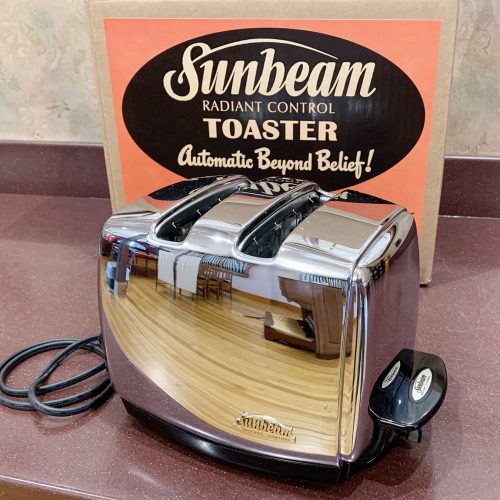

:no_upscale()/cdn.vox-cdn.com/uploads/chorus_asset/file/23042415/shollister_toaster_20200911.jpg)
Some people have had poor results if you read the reviews but I'm happy with mine and I'm pretty picky.īefore this I was using one of the "cool side" Dualit toasters with the long slots and it worked okay for 2 1/2 years then began not toasting evenly. It has a good control that in my unit is as accurate as I expected. However I like breads that have the long slices and for those I have a Breville Ikon which also toasts bagels on just the cut side (as do other modern toasters). I also clean it carefully and keep the crumb tray clean. It has had a new electric cord installed four times over the years I have owned it. The toast, once you set the desired degree of toasting, turns out perfect every time. I still use my Sunbeam T-20 that is 60 years old for regular bread and it works a treat. But I only make toast a few times a month, so I just deal with it. Oh, and for those with problems with your toaster either over- or under-toasting your bread, am I correct in assuming that if you watched it like a hawk, it would be possible to pop the toast at the desired doneness? I know this isn't what one looks for in a toaster, but I just want to make sure I'm not missing something.įor the record, I just use an el-cheapo toaster oven and resign myself to watching, flipping, rotating, etc my toast as it cooks.

Maybe some toasters are better at some of these, and this will give some insight into what QC test they presumably passed in the design process. I also wonder how some of them compare in toasting Lender's Bagels, real bagels, grocery store bread (i.e., bread with additives to lengthen shelf life), and homemade bread. I'd be curious to know if preheating the toaster/toaster oven solves some of the uniformity and slowness problems. This may be due to a calibrating the toaster to different breads or different preferences. The toaster goes too hot or too cool for your liking. Problem 4 is probably just a temperature issue. These probably need to preheat the reflectors/reradiatiors before they really get to work. Problem 3 seems to be mainly associated with toaster ovens, where the heating elements are further from the bread. Maybe toasters are calibrated for additive-filled grocery store breads and are simply bad at toasting water-flour-yeast-salt breads. Maybe the composition or location of the heating or reflecting elements has changed, so now one is too dominant. Maybe the design of the heating and reflecting elements has changed, and now the balance of direct and reflected heat is no longer correct. Maybe in an attempt to accommodate bagel-width items, the baskets have become so large that they do a poor job of aligning the bread with the heating elements. Problem 2 could be caused by a few different things. Why this would have gotten worse in newer toasters, who knows? This also may be a problem due to poorly-designed wide slots that may place the bimetallic strip too far from a narrow piece of toast. Problem 1 seems like a design issue with the timer or thermostat. Depending on the toaster, it seems like there are a few different ones:ġ) Toast comes out too light or too dark-impossible to find the "Goldilocks" setting.Ĥ) Toaster browns the outside too fast or too slow relative to how it cooks the inside. Maybe it would help to document exactly what the problems are.


 0 kommentar(er)
0 kommentar(er)
